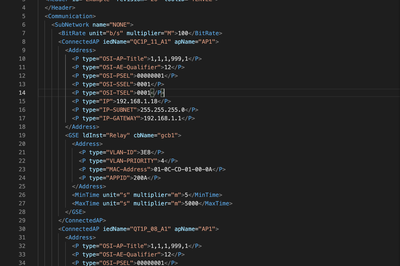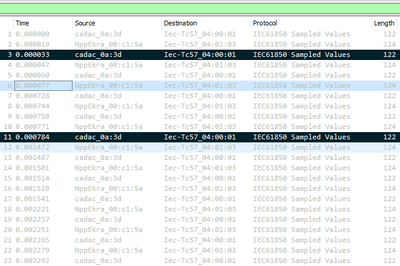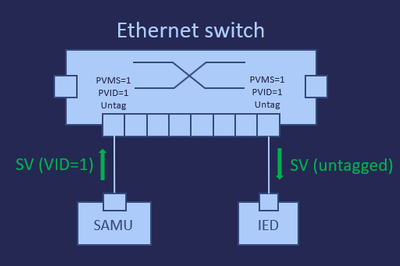
What is IEC 61850 Standard (or Protocol?)
The IEC 61850 standard is a comprehensive set of international standards that governs how devices in electrical substations communicate. It's more than just a protocol; it provides a complete framework for the design and operation of substation automation systems. The standard includes specific protocols like GOOSE and Sampled Values, and leverages existing ones like MMS and XMPP. It also introduces a standardized object-oriented data model and abstract communication service interfaces, enabling high interoperability and flexibility. The Substation Configuration Language (SCL) defined in the standard simplifies the setup and maintenance of a substation automation system. The IEC 61850 standard, with its numerous documents, is a key enabler of modern substation automation systems.
What is the IEC 61850 Standard?
The IEC 61850 standard is a set of international standards that define how devices in electrical substations communicate with each other. This standard was first published in 2002-2003 by the International Electrotechnical Commission (IEC). The standard has since been revised and expanded, and the current edition consists of a large number of documents.
Why IEC 61850 is Not Just a Protocol
The IEC 61850 standard is often referred to as a protocol, but it's important to understand that it's much more than that. While it does define protocols for communication within and between electrical substations, it also provides a comprehensive framework for the design and operation of substation automation systems.
One of the key aspects of IEC 61850 is its definition of several specific protocols, each designed for a particular purpose within the substation automation system. These include:
-
GOOSE (Generic Object Oriented Substation Event): This is a control model mechanism in IEC 61850 which provides a fast and reliable mechanism of transferring event-oriented data.
-
Sampled Values (SV): This protocol is used for transmitting digitized representations of analogue data, such as current and voltage measurements.
In addition to these, IEC 61850 also makes use of several existing protocols, including:
-
MMS (Manufacturing Message Specification): This is an ISO standard (ISO 9506) used for transferring real time process data and supervisory control information between networked devices and/or computer applications.
-
XMPP (Extensible Messaging and Presence Protocol): This is a communication protocol for message-oriented middleware based on XML (Extensible Markup Language).
By defining its own protocols and leveraging existing ones, IEC 61850 provides a comprehensive and flexible framework for substation automation. This makes it much more than just a protocol - it's a complete solution for the design and operation of modern electrical substations.
Understanding the IEC 61850 Standard
The IEC 61850 standard is based on a three-level architecture of the automation system, which includes the process level, bay level, and station level. This architecture allows for efficient and reliable communication between different devices within a substation, enabling them to work together seamlessly.
The process level involves the actual physical devices in the substation, such as circuit breakers and transformers. The bay level consists of intelligent electronic devices (IEDs) that control and monitor the physical devices. The station level is where the operator interacts with the system, often through a human-machine interface (HMI).
Key Features of the IEC 61850 Standard
One of the key features of the IEC 61850 standard is its use of a standardized object-oriented data model. This model allows for the representation of all substation elements in a standardized way, making it easier for different devices to understand and interact with each other.
Another important feature is the use of abstract communication service interfaces (ACSI). These interfaces define a set of services that can be used for communication between different devices. This abstraction allows the standard to be independent of the underlying network technology, making it highly flexible and adaptable.
The IEC 61850 standard also defines high-performance protocols such as GOOSE (Generic Object Oriented Substation Event) and Sampled Values. GOOSE is a control model mechanism that provides a fast and reliable mechanism of transferring event-oriented data. Sampled Values is a protocol used for transmitting digitized representations of analogue data, such as current and voltage measurements. These protocols are designed to meet the demanding performance requirements of substation automation systems, ensuring fast and reliable communication between devices.
Furthermore, the IEC 61850 standard defines the Substation Configuration Language (SCL), a powerful tool for configuring substation automation systems. SCL is an XML-based language that allows for the representation of substation elements and their configuration in a standardized way. This makes it possible to exchange configuration data between different configuration tools and devices, greatly simplifying the process of setting up and maintaining a substation automation system. The use of SCL contributes to the flexibility and interoperability of systems based on the IEC 61850 standard.
Each of these features contributes to the power and flexibility of the IEC 61850 standard, making it a key enabler of modern substation automation systems.
Current Documents in the IEC 61850 Standard
The IEC 61850 standard is currently composed of the following documents:
- IEC TR 61850-1:2013
- IEC TS 61850-1-2:2020+AMD1:2022 CSV
- IEC TS 61850-2:2019
- IEC 61850-3:2013
- IEC 61850-4:2011+AMD1:2020 CSV
- IEC 61850-5:2013+AMD1:2022 CSV
- IEC 61850-6:2009+AMD1:2018 CSV
- IEC 61850-7-1:2011+AMD1:2020 CSV
- IEC 61850-7-2:2010+AMD1:2020 CSV
- IEC 61850-7-3:2010+AMD1:2020 CSV
- IEC 61850-7-4:2010+AMD1:2020 CSV
- IEC TR 61850-7-5:2021
- IEC TR 61850-7-6:2019
- IEC TS 61850-7-7:2018+AMD1:2023 CSV
- IEC 61850-7-410:2012+AMD1:2015 CSV
- IEC 61850-7-420:2021
- IEC TR 61850-7-500:2017
- IEC TR 61850-7-510:2021
- IEC 61850-8-1:2011+AMD1:2020 CSV
- IEC 61850-8-2:2018
- IEC 61850-9-2:2011+AMD1:2020 CSV
- IEC/IEEE 61850-9-3:2016
- IEC 61850-10:2012
- IEC TR 61850-10-3:2022
- IEC TS 61850-80-1:2016
- IEC TR 61850-80-3:2015
- IEC TS 61850-80-4:2016
- IEC TR 61850-90-1:2010
- IEC TR 61850-90-2:2016
- IEC TR 61850-90-3:2016
- IEC TR 61850-90-4:2020
- IEC TR 61850-90-5:2012
- IEC TR 61850-90-6:2018
- IEC TR 61850-90-7:2013
- IEC TR 61850-90-8:2016
- IEC TR 61850-90-9:2020
- IEC TR 61850-90-10:2017
- IEC TR 61850-90-11:2020
- IEC TR 61850-90-12:2020
- IEC TR 61850-90-13:2021
- IEC TR 61850-90-14:2021
- IEC TR 61850-90-16:2021
- IEC TR 61850-90-17:2017
Each of these documents provides specific guidance and requirements for different aspects of substation automation systems, making the IEC 61850 standard a comprehensive resource for the design, implementation, and operation of these systems.
In conclusion, the IEC 61850 standard is a key enabler of modern substation automation systems. Its use of standardized data models and abstract communication interfaces allows for a high degree of interoperability and flexibility, making it an essential tool for the efficient and reliable operation of electrical substations.
last articles

Verification of SCD files for digital substations: requirements and practical experience
18 November 2021


